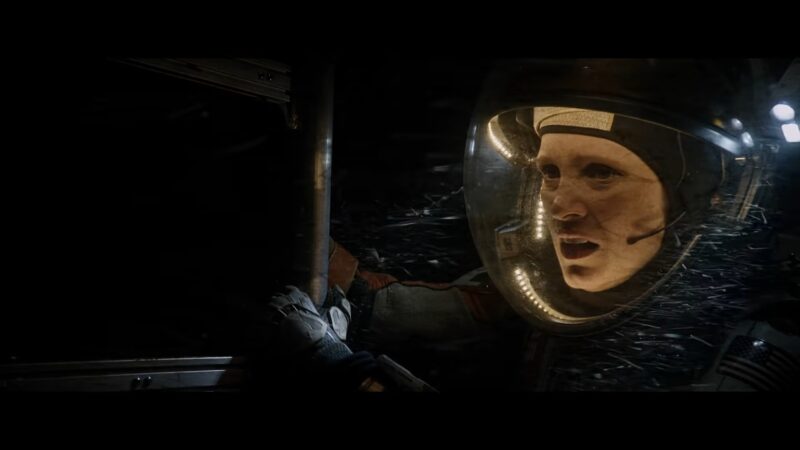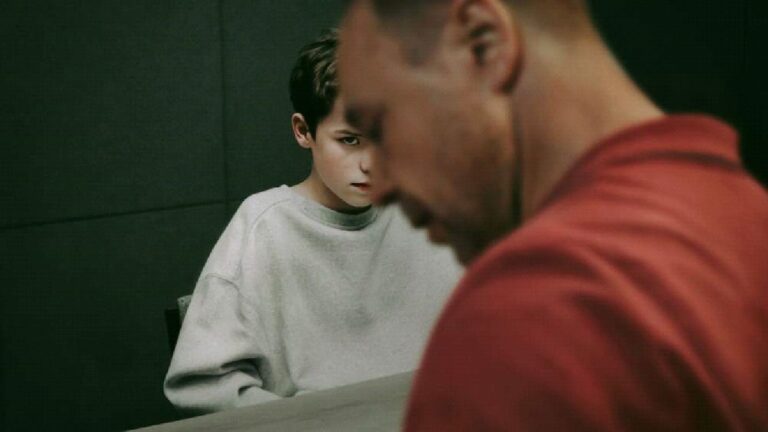2015 was a year that brought us a plethora of cinematic experiences, but it was particularly a golden year for science fiction. From space odysseys to dystopian futures, the sci-fi genre pushed the boundaries of storytelling and visual effects. In this blog post, we’ll delve into the best sci-fi movies of 2015, dissecting what makes each one a masterpiece in its own right.
Before we dive into the cinematic gems of 2015, it’s important to understand the cultural and technological context in which these films were made. The year 2015 was a time when advancements in visual effects and storytelling techniques allowed filmmakers to create more immersive worlds than ever before. This was also a year when audiences were eager for stories that challenged their perceptions and made them think deeply about the future.
Sci-fi movies have always been a mirror reflecting our societal concerns, hopes, and fears. The best films of this genre not only entertain but also provoke thought, and 2015 was a year that did just that. So, buckle up as we take a journey through time, space, and the human psyche.
The Revival of Star Wars
The year 2015 saw the much-anticipated return of the Star Wars franchise with “The Force Awakens.” Directed by J.J. Abrams, this installment aimed to recapture the magic of the original trilogy while introducing a new generation to the galaxy far, far away. The film was a blend of the old and the new, featuring iconic characters like Han Solo and Leia Organa, while also introducing new heroes like Rey, Finn, and Poe Dameron.
The Force Awakens was not just a nostalgia trip; it was a film that expanded the Star Wars universe in new and exciting ways. The introduction of the First Order as the new antagonistic force and the mystery surrounding Rey’s parentage were plot elements that set the stage for the sequels. The film also made extensive use of practical effects, a nod to the original trilogy, which added a layer of authenticity to the high-tech world.
Impact on the Franchise
The release of “The Force Awakens” had a monumental impact on the Star Wars franchise and the sci-fi genre as a whole. Not only did it break numerous box office records, but it also rekindled interest in a series that had been dormant for a decade. Merchandise flew off the shelves, and a new generation became enamored with the Star Wars universe.
However, the film was not without its controversies. Some fans criticized it for being too similar to “A New Hope,” the original 1977 film. Despite this, “The Force Awakens” succeeded in revitalizing the franchise, setting the stage for new stories and characters to be explored in future installments.
The Martian: A One-Man Show
“The Martian,” directed by Ridley Scott and based on the novel by Andy Weir, is a gripping tale of survival against all odds. When astronaut Mark Watney is left stranded on Mars, he must rely on his ingenuity and scientific knowledge to survive until rescue is possible. The film is a celebration of human resilience and the scientific method, as Watney uses his skills to grow food, generate water, and communicate with NASA.
- The film’s focus on real science made it stand out.
- Matt Damon’s performance was critically acclaimed, adding a human element to scientific endeavors.
Realism in Sci-Fi
What sets “The Martian” apart from other sci-fi films is its commitment to scientific accuracy. The film consulted with NASA to ensure that the portrayal of space travel, Martian terrain, and survival tactics were as realistic as possible. This added a layer of authenticity that was appreciated by audiences and critics alike.
The film also sparked interest in space exploration and the possibility of colonizing Mars. It showed that science fiction could be both entertaining and educational, inspiring a new generation of scientists and engineers.
Ex Machina: The Turing Test on Screen
“Ex Machina,” directed by Alex Garland, is a psychological thriller that delves into the complexities of artificial intelligence. The film revolves around a young programmer, Caleb, who is invited to administer the Turing Test to an intelligent humanoid robot named Ava. The film explores themes of consciousness, free will, and the ethical implications of creating sentient beings.
The brilliance of “Ex Machina” lies in its nuanced portrayal of AI. Unlike many sci-fi films that depict artificial intelligence as either a benevolent savior or a malevolent force, “Ex Machina” presents a more balanced view. Ava is neither entirely good nor bad; she is a complex character with her own desires and motivations.
The Human Element
While “Ex Machina” is a film about technology, it is also a deeply human story. It explores the complexities of human interaction and the ethical dilemmas that arise when we play god. The film raises questions about what it means to be human and whether artificial beings can possess human-like qualities such as consciousness and emotion.
- The film received critical acclaim for its thought-provoking themes and stellar performances.
- The minimalist setting and limited cast create an intimate atmosphere that heightens the tension.
Mad Max: Fury Road
“Mad Max: Fury Road,” directed by George Miller, is a high-octane thrill ride set in a post-apocalyptic world. The film follows Max Rockatansky and Furiosa as they attempt to escape the tyrannical warlord Immortan Joe. With its breathtaking action sequences and stunning visual effects, “Mad Max: Fury Road” is a masterclass in filmmaking.
The film is not just an action-packed spectacle; it also delves into themes of survival, freedom, and the human spirit. The characters are well-developed, each with their own motivations and arcs, making the film a compelling narrative experience in addition to a visual feast.
Feminism and Sci-Fi
One of the standout aspects of “Mad Max: Fury Road” is its feminist undertones. The film features strong female characters who are not just sidekicks or love interests but are integral to the story. Furiosa, played by Charlize Theron, is a powerful character who challenges traditional gender roles and becomes a symbol of resistance against tyranny.
The film also tackles issues like human trafficking and environmental degradation, making it a socially relevant piece of cinema. It shows that sci-fi can be a powerful medium for social commentary, challenging norms, and inspiring change.
Jurassic World: The Return of Dinosaurs
“Jurassic World,” directed by Colin Trevorrow, brought dinosaurs back to the big screen in a big way. The film takes place in a fully operational dinosaur theme park, a dream realized from the original “Jurassic Park” series. However, things go awry when a genetically engineered dinosaur escapes its enclosure, leading to chaos and destruction.
The film explores the ethical implications of genetic engineering and the hubris of playing god. It serves as a cautionary tale about the dangers of unchecked scientific experimentation, raising questions about the moral responsibilities that come with technological advancements.
Box Office Behemoth
“Jurassic World” was a massive commercial success, breaking numerous box office records and becoming one of the highest-grossing films of all time. Its success can be attributed to a combination of nostalgia for the original series and a new generation of viewers who were captivated by the lifelike dinosaurs and thrilling action sequences.
The film also spawned a new series of sequels and merchandise, revitalizing the “Jurassic Park” franchise for a new era. However, it also faced criticism for its lack of character development and reliance on CGI, sparking debates about the role of technology in filmmaking.
Chappie: The Robot with a Soul
“Chappie,” directed by Neill Blomkamp, is a unique entry in the sci-fi genre that tackles the concept of sentience in artificial beings. Set in a near-future Johannesburg where crime is patrolled by a mechanized police force, the film follows a police droid named Chappie who gains the ability to think and feel. The film serves as a social commentary on issues like poverty, crime, and the ethical implications of AI.
Chappie, as a character, serves as a mirror reflecting the society that created him. His journey from a blank slate to a sentient being raises questions about nature vs. nurture and the moral responsibilities we have towards sentient AI. The film also delves into the complexities of parent-child relationships, as Chappie learns about the world from his human “parents.”
Visual Effects
The visual effects in “Chappie” are nothing short of stunning. The CGI used to bring Chappie to life is incredibly realistic, making it easy for audiences to suspend disbelief and engage with the character emotionally. The film also makes use of practical effects, blending the real and the digital seamlessly.
- The film was praised for its visual effects but received mixed reviews for its storytelling.
- Despite its polarizing reception, “Chappie” has gained a cult following and is often discussed in conversations about AI ethics.
Tomorrowland: A World Beyond
“Tomorrowland,” directed by Brad Bird, is a film that stands out for its optimistic view of the future. The movie follows a teenager and a former boy-genius inventor who embark on a mission to unearth the secrets of a place somewhere in time and space that exists in their collective memory. Unlike many dystopian sci-fi films, “Tomorrowland” presents a future where technology and human ingenuity can solve the world’s problems.
The film is a breath of fresh air in a genre often filled with bleak futures and existential dread. It serves as a reminder that science fiction can inspire as well as caution, providing a balanced view of what technology can achieve.
Box Office and Reception
Despite its optimistic message and high production values, “Tomorrowland” was not a commercial success and received mixed reviews from critics. Many felt that while the film was visually stunning, it lacked a compelling narrative and fully developed characters.
However, “Tomorrowland” has found a niche audience who appreciate its hopeful message and imaginative visuals. It serves as an example of how even films that don’t succeed at the box office can still have an impact, sparking discussions about the role of optimism in science fiction.
Inside Out: The Mind as a Universe
While not a traditional science fiction film, Pixar’s “Inside Out” deserves a special mention for its innovative approach to exploring the human mind. Directed by Pete Docter and Ronnie del Carmen, the film personifies the emotions of a young girl named Riley as she navigates a life-changing move with her family. Each emotion—Joy, Sadness, Anger, Fear, and Disgust—has its own character, and they all influence Riley’s actions and reactions.
“Inside Out” is a groundbreaking film that delves into the complexities of human emotions in a way that is both entertaining and educational. It offers a unique perspective on mental health and emotional well-being, making it a must-watch for audiences of all ages.
Animation Meets Psychology
The film’s success lies in its ability to blend animation with psychological concepts. “Inside Out” consulted with psychologists to ensure that its portrayal of emotions and mental processes was accurate. This level of detail adds a layer of authenticity to the film, making it a valuable resource for understanding human psychology.
- The film was praised for its originality and emotional depth, winning the Academy Award for Best Animated Feature.
- “Inside Out” has been used in educational settings to teach children about emotions and mental health.
Predestination: A Temporal Puzzle
“Predestination,” directed by the Spierig Brothers, is a lesser-known gem that tackles the complexities of time travel. Based on the short story “—All You Zombies—” by Robert A. Heinlein, the film follows a temporal agent as he tries to apprehend an elusive terrorist known as the “Fizzle Bomber.” The narrative is a mind-bending loop that challenges conventional storytelling.
The film is a cerebral experience that requires the audience to pay close attention to details. It explores themes of identity, destiny, and the nature of time, making it a thought-provoking addition to the sci-fi genre.
Philosophical Undertones
What sets “Predestination” apart is its philosophical undertones. The film delves into existential questions about free will and predestination, challenging the audience to ponder the complexities of time and existence. It’s a film that stays with you long after the credits roll, sparking discussions and debates about its intricate plot and themes.
- The film received critical acclaim for its complex narrative and strong performances, particularly from Ethan Hawke and Sarah Snook.
- “Predestination” is a cult classic that has garnered a dedicated following, particularly among fans of time-travel narratives.
FAQ
1. Were there any notable sci-fi movie directors who made a debut in 2015?
While the article highlights several established directors, 2015 also saw emerging talents stepping into the sci-fi genre, bringing fresh perspectives and innovative storytelling techniques.
2. How did the sci-fi movies of 2015 perform at international film festivals?
Many of the sci-fi films released in 2015 were showcased at international film festivals, with some even bagging awards. These festivals played a role in highlighting the genre’s artistic and narrative potential.
3. Were there any sci-fi movies in 2015 that specifically catered to a younger audience?
While the article discusses several films with broad appeal, 2015 also saw the release of sci-fi movies tailored for children and young adults, blending adventure with age-appropriate themes.
4. How did the sci-fi movies of 2015 leverage advancements in sound design?
Sound design plays a crucial role in immersing audiences, especially in the sci-fi genre. Many 2015 releases utilized cutting-edge sound technologies to enhance the cinematic experience.
5. Were there any collaborations or crossovers in the sci-fi movies of 2015?
While the article focuses on individual films, it’s worth noting that the sci-fi genre often sees collaborations, shared universes, and crossovers, adding layers of depth and interconnected narratives.
Conclusion
2015 was a landmark year for science fiction cinema, offering a diverse range of films that explored a myriad of themes and concepts. From the revival of iconic franchises to the introduction of new, thought-provoking narratives, it was a year that pushed the boundaries of what the genre could achieve.
Whether you’re a casual viewer or a die-hard sci-fi fan, the films of 2015 offer something for everyone. They challenge us to think critically about our world and the ethical dilemmas we face as technology continues to advance.
Reflecting on this exceptional year, it’s evident that the future of science fiction shines brightly, and we eagerly anticipate the fascinating directions it will lead us. Be sure to explore our article highlighting the top science fiction films of 2016.
Related Posts:
- Best Sci-Fi Movie Marvels of 2016: A Journey Through…
- The 10 Best Sci-Fi Movies of 2014 - A Year in Review
- Best Hiking Adventures in Minya Konka 2024: Tips for…
- Revolutionizing Your Digital Space: 10 Tips for…
- Choosing a Social Media: Which Platform Suits Your…
- London Nightlife For Singles: Best Places To Party…














